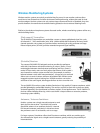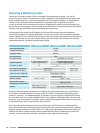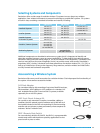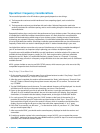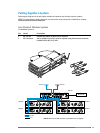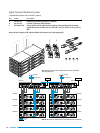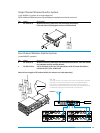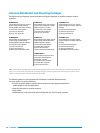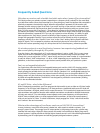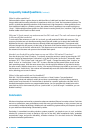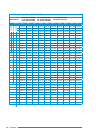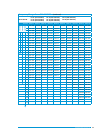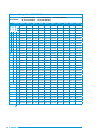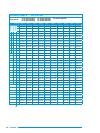
www.sennheiserUSA.com/G3
17
Frequently Asked Questions
Why does my receiver emit a horrible loud static noise when I power off my transmitter?
This simply means your wireless system is operating on a frequency that is already in use, most likely
by a television station. When the transmitter is on, everything may work fine because the transmitter’s
proximity overpowers the television signal. When the transmitter is powered off, the receiver still
attempts to latch onto any signal it can find. If you see RF activity on the receiver’s meters while the
transmitter powered off, that means that there is another signal interfering with your system (most
likely TV). You can use the “Easy Setup” / “Scan New List” process to find a new free frequency. Once
you identify and select a free frequency, this loud static noise will no longer come through your system
when the transmitter is powered off. If you use your system in various locations, it is always a good
idea to perform the “Easy Setup” process to identify a clean frequency as the RF environment will
change with geographic location. If your receiver cannot find a free Channel on which to operate, a
temporary solution is to raise “Squelch” from “Low” to the “Med” setting. Raising Squelch will block
larger RF signals. This is a temporary solution, and should only be used as a last resort as raising
Squelch also reduces operating range. It is always best to find a free frequency, whenever possible.
My wireless system is on and functioning, however I am experiencing feedback and
poor sound quality through my PA system.
From the factory, the output level on G3 rack-mount receivers is set to +18dB. This is a very strong
signal and can result in feedback or poor sound quality with certain mixing consoles and amps. To
remedy this, you can adjust the “AF OUT” menu on the receiver to a lower number. It is recommended
to start at around “0 dB” and perhaps “+3 dB or +6 dB” depending on your application. These are
guidelines, so feel free to experiment to get the best sound possible from your particular system.
Can I use rechargeable batteries?
Yes. Sennheiser offers the BA2015 rechargeable battery pack and the L2015/NT charging station.
Most G3 portable components feature external charging contacts to allow charging the BA2015 by
simply placing the portable device into the L2015 charger. Standard “AA” rechargeable batteries can
be used with G3 systems, however the external contacts will only serve to charge the BA2015. The
battery meter may also indicate a low battery status more quickly, due to the lower voltage produced
by NiMH rechargeable batteries. The BA2015 was designed to provide the correct battery reading,
and is the recommended solution.
AF and RF Mute – what’s the difference?
With G3 bodypack transmitters, users can program the Mute switch to act as either an AF Mute (audio
frequency) or an RF Mute (radio frequency). AF Mute performs a traditional audio mute. RF Mute will
cut the transmitter’s RF signal, which in turn mutes the receiver. This is particularly important for back-
up transmitters and guitarists/bassists with multiple transmitters connected to multiple instruments
and only one receiver. (Two transmitters cannot operate on the same frequency at the same time!).
With RF Mute, multiple guitars can all be equipped with transmitters, all set to the same frequency,
with only one active at a time. To switch instruments, simply engage the “Mute,” switch instruments
and “Unmute” the new instrument.
What are the advantages of Low Power mode on ew 300/500 G3 transmitters?
In many instances, users think more power is better but, with respect to wireless systems, “just
enough” power is best. The stronger your RF output power is, the greater chance your systems may
interfere with each other. Higher RF output power also makes it more difficult to deploy large multi-
channel systems. It will be possible to achieve higher channel counts in a 42 MHz switching bandwidth
by decreasing your RF output power and utilizing properly designed antenna systems.



